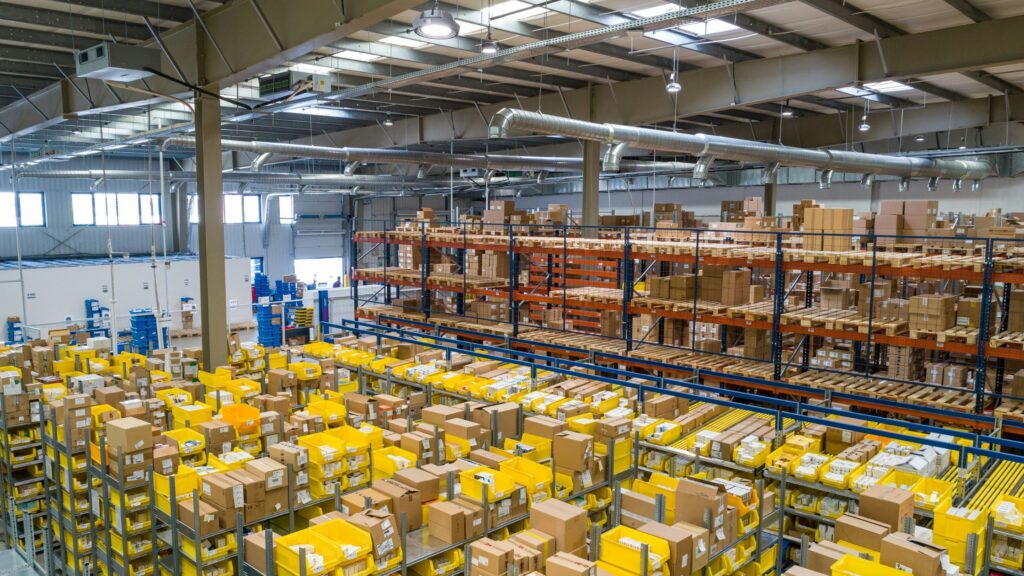Your e-commerce store is taking off. Sales are up, volumes are exploding, customers are flocking in. But behind this commercial success often lies a major challenge: logistics growth.
Going from 100 to 10,000 orders a month means a change of scale. What worked yesterday quickly becomes a hindrance today: saturated warehouses, preparation errors, shipping delays, rising costs and exploding after-sales requests.
So how do you support this growth without losing efficiency or profitability? Here’s how to build a logistics growth model that can grow with your business.
Understanding logistics growth: a new challenge for e-commerce brands
Logistics growth refers to a company’s ability to adapt its processes, tools and resources to absorb increasing order volumes.
At first, everything is simple: a small stock, manual shipments, a few cartons a day. But as sales grow, logistics become a strategic issue.
Without anticipation, business growth can quickly turn into operational chaos:
- preparation and dispatch delays
- order errors
- poorly managed inventories
- and overwhelmed customer service
Clearly, success can become a drag if it isn’t backed up by solid, scalable logistics.
Common obstacles to logistics growth

Many fast-growing companies face the same obstacles:
- Lack of inventory visibility: without centralized data, effective management is impossible.
Manual or obsolete processes: automation becomes essential to absorb volumes.
Non-interconnected tools (CMS, ERP, WMS): desynchronization leads to errors and wasted time. - Sub-optimized transport: costs soar as volume increases.
- Limited internal resources: recruiting, training and supervising a logistics team becomes a job in its own right.
To understand when and why it becomes strategic to outsource your logistics, read our article on fulfillment vs. traditional logistics.
The pillars of scalable e-commerce logistics
Scaling up isn’t just about doing “more”. It’s about doing things better, faster and to the same high standards.
Here are the four essential pillars for building logistics that support your growth:
Connected tools and a high-performance WMS
A warehouse management system (WMS) is essential for automating processes, tracking inventory in real time and streamlining order preparation.
Thanks to a WMS, every movement is tracked and errors are reduced to a minimum.
Modular, agile processes
Your logistics must be able to absorb volume peaks: sales, holidays, influencer campaigns, product launches…
A modular model means you can quickly adapt human resources, storage space and shipping flows.
An expert logistics team
Successful logistics growth relies on solid skills in flow management, intelligent picking, customized packaging and delivery route optimization.
Strategic partnerships and reliable carriers
Working with a network of trusted partners, as Iziship does, guarantees reliable deliveries and competitive rates.
Transport pooling and green logistics are becoming key levers for maintaining profitability.

How can you anticipate and control logistics growth?
Well-managed growth can’t be improvised: it has to be anticipated.
- Establish a ramp-up plan
Define your critical thresholds: 500, 1,000, 5,000, then 10,000 orders. At each level, identify the resources required (manpower, space, transport, tools).
- Centralize your logistics data
The more your business grows, the more vital data becomes: inventories, orders, lead times, carriers, margins. A connected WMS gives you a unified, real-time view of all your flows.
- Automate time-consuming tasks
From picking to generating transport labels, every step can be optimized. Less human effort on repetitive tasks means more focus on management and growth.
- Outsourcing for greater agility
Joining forces with an e-commerce logistics provider means you can scale faster without having to invest heavily in infrastructure. This is the choice many brands make to transform their fixed costs into variable costs.
Iziship: a logistics partner that grows with you
At Iziship, we support brands at every stage of their development. Our model is based on flexible, modular and connected logistics:
- Seamless integration with your CMS and ERP.
- A WMS platform offering real-time tracking.
- Responsive teams that adapt to your volumes and activity peaks.
- Negotiated transport rates, optimized according to your needs and destinations.
Complete control of your logistics chain, from reception to delivery.
This approach allows you to keep control of your logistics while focusing on your growth.
Discover also how Iziship optimizes delivery logistics management to support your e-commerce performance.
FAQ Logistics growth: everything you need to know
This is a company’s ability to adapt its logistics organization (tools, processes, teams) to increasing order volumes.
By relying on a high-performance WMS, automated processes, reliable partners and agile resource management.
As soon as internal management becomes an obstacle: space saturation, delays, increasing complexity, loss of visibility.
Breakage rate, shipping time, logistics cost per order, return rate and customer satisfaction.
Thanks to scalable logistics, advanced technology and dedicated support, Iziship helps brands grow without operational disruption.
In a nutshell: logistics as a growth driver
Growing from 100 to 10,000 orders a month is a success story. But without scalable logistics, this success can quickly turn into a constraint.
Logistics growth means being able to support your ambitions with a robust, connected and flexible organization. And that’s precisely whereIziship comes in: as a growth partner, capable of adapting your logistics flows to your pace of development, without ever slowing down your performance.
